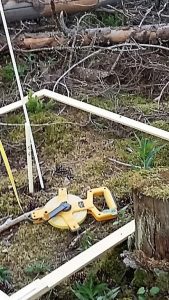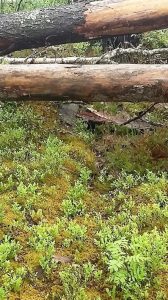 Our object is to investigate the impact of interacting forest disturbances on the potential of forest regeneration. In southeastern Finland, during the Asta storm (2010) wide mature Norway spruce stands were wind-blown. It conducted to outbreak densities of European spruce bark beetles (Ips typographus L.). High bark beetle density caused gradually increasing tree mortality, with a fertilizing effect by dead needles. New microsites had changes in conditions, such as solar radiation, humidity, temperature etc. The potential of those different conditions for forest regeneration will be studied in the conservation areas. The study layout will cover the target area with a systematic sampling using 1×1 m grids. Different habitat types will be estimated including open soil after released root system, different levels of bark beetle attacks and undamaged control sites.
Our object is to investigate the impact of interacting forest disturbances on the potential of forest regeneration. In southeastern Finland, during the Asta storm (2010) wide mature Norway spruce stands were wind-blown. It conducted to outbreak densities of European spruce bark beetles (Ips typographus L.). High bark beetle density caused gradually increasing tree mortality, with a fertilizing effect by dead needles. New microsites had changes in conditions, such as solar radiation, humidity, temperature etc. The potential of those different conditions for forest regeneration will be studied in the conservation areas. The study layout will cover the target area with a systematic sampling using 1×1 m grids. Different habitat types will be estimated including open soil after released root system, different levels of bark beetle attacks and undamaged control sites.
 The aim is to create a model for regeneration dynamics in post-storm and insect outbreak conditions. We will unravel time needed for regeneration under different conditions. Climatic relationships may be unimportant when estimating small areas, but in large areas they can be remarkable. In northern Europe, climate models indicate changes in extreme geostrophic wind speeds and typically bark beetle populations are increasing after heavy winds. Further, forest regeneration in damaged areas can have strong effect on ecosystem and climate.
The aim is to create a model for regeneration dynamics in post-storm and insect outbreak conditions. We will unravel time needed for regeneration under different conditions. Climatic relationships may be unimportant when estimating small areas, but in large areas they can be remarkable. In northern Europe, climate models indicate changes in extreme geostrophic wind speeds and typically bark beetle populations are increasing after heavy winds. Further, forest regeneration in damaged areas can have strong effect on ecosystem and climate.